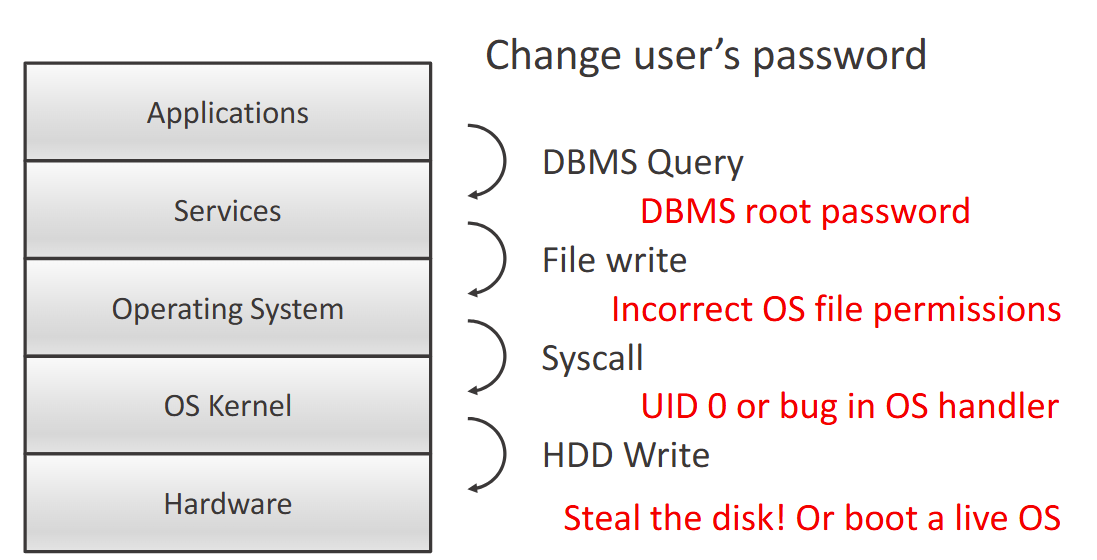Foundations
Defining Security
Security = Protection of assets Security Policy = Concise document explaining the needs
Computer security is usually defined as three key areas (CIA)
- Confidentiality - Prevention of unauthorised disclosure of information
- Privacy - medical records etc
- Integrity - Prevention of unauthorised modification of information
- Changing database records
- Availability - Prevention of unauthorised withholding of information or resource
- Prevent DoS attacks
Accountability - Users should be held responsible for their actions, audit trails must be kept Non-repudiation - Provides an un-forgeable evidence that someone did something, mostly a legal concept. Applies to physical security (key cards)
Security-unaware users have specific security requirements but no security expertise
Trade-offs of computer security come down to the threats and specific situation
Security Design
- Approach should be systematic, disciplined and well planned
- From the inception/design of a system
- If added afterwards, could lead to disaster
Good design focuses on 4 principles:
Focus of Control
- Data - Permitted manipulation of data e.g consistency check
- Operations - Permitted invocations e.g. transfermoney()
- Users - Permissions for specific users
Complexity vs. Assurance
Would we prefer a simple approach with high assurance? Or a feature-rich environment?
Feature-rich security systems and high assurance do not match easily e.g Linux vs Windows permissions
Centralised or Decentralised Controls
Should defining and enforcing security be performed by a central entity, or be left to individual components in a system
Central Entity - A possible bottleneck Distributed So9lution - More efficient, but harder to manage
Layered Security
We can visualise our security model in layers Each layer protects a boundary, and relies on the security of the layers below
Applications > Services > OS > Kernel > Hardware
Attack the layer below:
